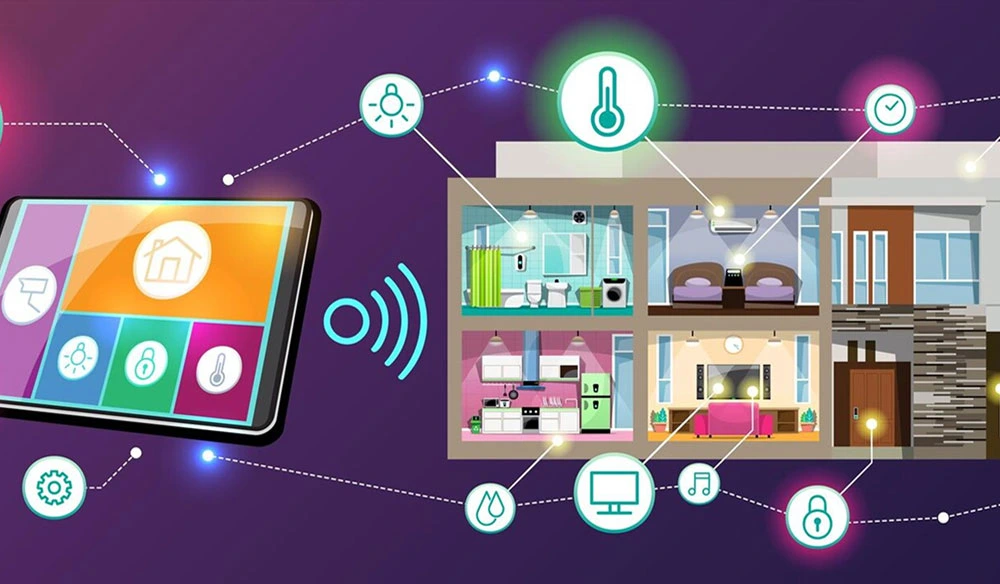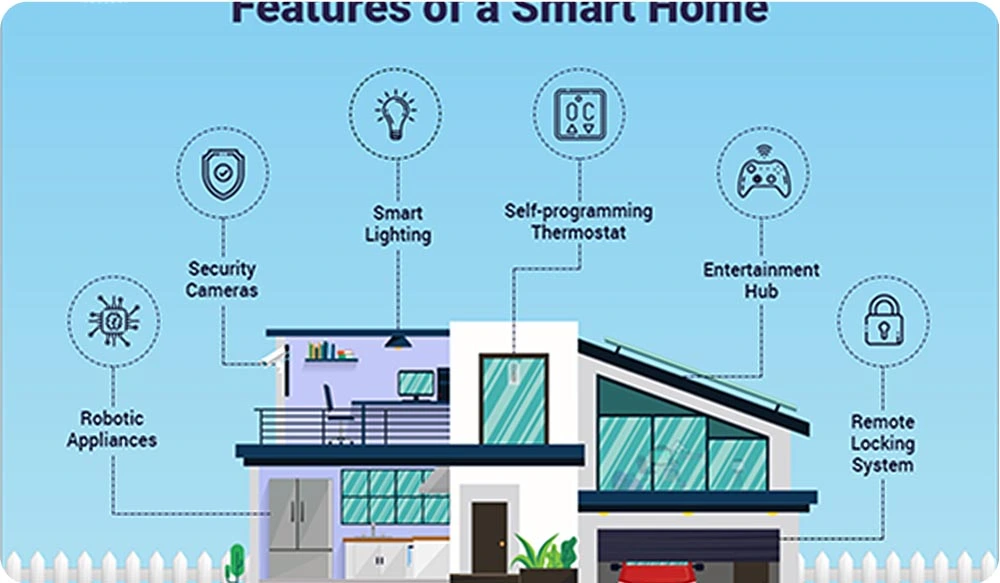Choosing Between Smart Home Systems: SmartThings vs Google vs Alexa vs Apple
When you first begin home automation, you'll quickly discover that the more your smart devices can work and operate together, the more they can do. Yes, it's fantastic that your smart lights can switch on and lock themselves at dusk, but it's even better to tell a voice assistant "Good night" so that the alarm system sounds, the lights turn out, the shades close, and the door locks lock. You'll need a smart home assistant for this.
A smart home platform is a software framework that, typically via a smartphone or tablet app, manages and controls numerous devices from various manufacturers. A hub, smart speaker, or smart display are examples of hardware found in the majority of smart home assistants (more on hubs in a bit). Naturally, you already have a smart home platform in your hands if you own a smartphone, but for the fun stuff, you'll want to add a hub or smart speaker.
Let’s look at the different smart home systems in detail.
This is an unusual situation for Samsung, as SmartThings company was initially a Samsung-only platform, which once again opened the door for Amazon and Google. Currently, there is a much wider range of compatible devices available, but since many of them also work with other platforms, choosing SmartThings company is also a compelling choice if you’ve already invested in a significant amount of high-end Samsung equipment. If your smart home is (or will be) primarily Samsung-based, then SmartThings performs admirably, providing its own Bixby voice assistant and features like SmartThings Find for easily lost items like earbuds.
While Bixby isn’t nearly as sophisticated as Siri, Google Assistant, or Amazon Alexa just yet, it nevertheless functions well for controlling household electronics and is constantly improving. It’s simple to operate individual devices and organize them in rooms with the help of the SmartThings company app, which is available for both iOS and Android smartphones.
Similar to Alexa, Google Assistant provides an unparalleled voice-activated smart home experience when paired with the Google Home and other Google Assistant-powered speakers. A built-in Google Assistant is included with all Android smartphones. It can do almost anything you ask of it, including playing music, receiving news updates, accepting calls, sending messages, and managing Google smart home devices.
Similar to Alexa, Google smart home devices have Assistant-equipped gadgets as well as ones that can be managed by it. The main reason for Google Home’s success is that 80% of smartphone users are Android users, and they utilize it as their default helper. Given that Google Assistant comes pre-installed on all Android devices and is more widely used than Alexa, it has an advantage over the latter. When using an Android or iOS device, the Assistant is compatible with the Google Home app. All you have to do is tap the “add device” button and follow the prompts to add a new device.
This is the most affordable and feature-rich smart home platform available: There is an enormous selection of Alexa smart home devices at deeply discounted prices – thanks to Amazon’s aggressive discounting and extensive brand partnerships. This is especially true during the site’s frequent sales events. Additionally, Amazon’s sub-brands, Blink and Ring, produce very reasonably priced smart security products that connect to its Echos and other hub devices. Additionally, a plethora of third-party items are available, such as essential gadgets like smart speakers, smart lamps, and thermostats. This means that you may use Alexa smart home devices to operate anything, regardless of your preference for other brands or Amazon products.
Alexa is well-known for her voice recognition and wide range of device compatibility. It allows for easy integration with smart homes and provides control over a multitude of gadgets. This simplifies home automation and changes the way you interact with your environment. Alexa connects to a range of devices to build a seamless smart home experience.
Using your iPhone, iPad, iPod, Airpods, and other Apple devices, you can effortlessly and securely manage your home’s lights, doors, thermostats, and other features with the help of the HomeKit technological platform. All of the connected smart home gadgets are combined by Apple HomeKit into a single “Home” interface, where they sync and function together. Because of this, Apple HomeKit has one of the best ecosystems available. The Home app on iOS, iPadOS, or macOS devices, together with Siri, allows users to control all linked gadgets, which makes things even better. Something must have a ‘Works with HomeKit’ badge on the package (or on the online listing) in order to be compatible with Siri, the Home app, and Homekit.
While it is admirable that Apple smart home wants to provide the best possible user experience, doing so might come at a cost. In the early years of HomeKit’s release, devices had to have a specific HomeKit chip in addition to passing Apple’s certification testing. This presented a significant opportunity that was seized by both Google and Amazon.
Look at these factors to choose the best smart home assistant platform:
When selecting a smart home platform, compatibility is one of the most important considerations. You must ensure that the device you want to buy is compatible with the platform of your choice. If the home assistant is incompatible, it will not work properly and you may incur a significant expense.
Smart home platforms should be simple to use and intuitive. Simplifying your life is the aim, not making it more complicated. Buy a system that is easy to set up and doesn’t involve many steps. Certain home assistants come with easy-to-follow instructions and tutorials that guide you from the first step to the last. The platform’s UI should be simple to use, aesthetically pleasing, and intuitive.
A smart home platform’s ability to customize and adapt can have a big impact on your whole experience. Many users want to experiment with complex settings and features, but most of them would prefer a plug-and-play device. Look for platforms with advanced settings and scripting capabilities if you like to customize your smart home. There are lots of customization options available with open-source platforms like Home Assistant.
If you are a fan of a particular brand, it makes sense to install a smart home assistant that ensures your brand loyalty. Choosing HomeKit makes sense if you have a significant amount of investment in the Apple ecosystem. With iPhones, iPads, Apple Watches, and other Apple devices, it integrates flawlessly.
The right platform for home automation will deeply impact the way you look at transforming your house into a smart home. When you consider the ecosystem, customization, compatibility, ease of use, and other factors, it becomes easier to decide which device works better for you.
Whether you use Google Home, Apple HomeKit, Samsung SmartThings, Amazon Alexa, or another platform, the important thing is to build an integrated and smooth smart home ecosystem that makes your life easier.
SmartNest is one of the few smart home automation companies in India that works with all the smart home platforms. Be it Samsung SmartThings, Google Assistant, Apple Homekit, or Amazon Alexa, all of them are compatible with SmartNest.
You may mix and match your smart appliances with SmartNest gadgets, including speakers, ACs, lights, curtains, and more. Knowing that SmartNest can easily support all of your equipment gives you peace of mind. Our switch controllers integrate easily into your current switchboards without requiring any difficulty or wiring modifications. Numerous intelligent capabilities are available with SmartNest, including voice control, mood setting, time-based appliance automation, geolocation, and much more.
If you want to automate your home today, consider SmartNest smart home automation devices.



